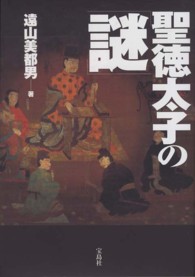Full Description
Parkinson's disease, a degenerative brain disorder, affects an estimated 0.25-0.50% of the population. Symptoms result from neuronal degeneration in the nigrostriatal dopaminergic pathway and include tremor, rigidity and gradual slow- ness of spontaneous movement. The cause of Parkinson's disease is only partially understood; both environmental factors and a genetic predisposition have been im- plicated in its etiopathogenesis. Neural transplantation is being used experimentally for providing an alternative biological source of dopamine both in animal studies and in experimental clinical trials. This book is the result of 15 years of research on the transplantation of dopaminergic neurons in the striatum of the weaver mouse, a neurological mutant characterized by genetically-determined degeneration of midbrain dopamine neurons. The weaver mouse constitutes the only available laboratory model with a chronic progressive disease that mimics Parkinsonism.
The other two models currently used to investigate dopaminergic mechanisms rely on the use of the neurotoxins- hydroxydopamine and methylphenyltetrahydropyridine for the selective removal of dopaminergic neurons from an otherwise healthy organism. Structural and functional aspects of transplantation of mesencephalic dopamin- ergic grafts into the striatum of weaver mice are reviewed, including histochemical correlates of graft survival and integration, numerical aspects of donor neuron survival, ultrastructural findings on synaptogenesis, neurochemical indices of dopam- ine uptake function and receptor binding, gene expression of several structural and neurotransmitter-receptor related molecules, the levels of striatal amino acid receptors, and the behavioral effects of unilateral and bilateral neuronal transplantations.
Contents
1. Introduction.- Dopamine and Parkinson's Disease.- Experimental Models of Parkinsonism in Laboratory Animals.- Graft-Assisted Neural Reconstruction ("Brainware Engineering"?).- References.- 2. Biology And Pathology of the Weaver Mutant Mouse.- Cellular and Molecular Genetics of the Weaver Mutation.- Alterations of the Mesotelencephalic Dopamine Projection System.- Cerebellar Phenotype of the Weaver Mutant.- Hippocampal Morphology.- Biology of Normal ? Mutant Cell Associations.- Behavioral Phenotype.- Structural Clues to the Weaver Riddle.- References.- 3. Histochemical Properties of Intrastriatal Mesencephalic Grafts.- Methodological Considerations.- Expression of Catecholaminergic Neurotransmitter-Related Molecules and Quantitative Aspects of Dopaminergic Neuron Survival.- Comparative Survival of Dopaminergic Neurons in Grafts Placed in Weaver and in 6-OHDA Lesion Hosts.- Expression of Neuropeptides and Structural Proteins.- References.- 4. Structural Correlates of Process Outgrowth and Circuit Reconstruction.- Axonal Reinnervation of the Host Striatum.- Synaptic Investment of Graft-Derived Dopamine Terminals.- Compartmental Specificity of the Striatal Reinnervation.- Innervation of Nonstriatal Regions by the Grafts.- Chemoaffinity and Axon-Target Recognition in Development and in Transplantation.- Dendrite Extension from the Graft into the Host Striatum.- Expression of Molecules Related to Axonal and Dendritic Outgrowth.- References.- 5. Neurochemical Indices of Functional Restoration.- Dopamine Uptake Markers.- Autoradiography of [3H]Dopamine Uptake.- Dopamine Receptors.- Neurotensin Receptors.- Excitatory and Inhibitory Amino Acid Receptors.- References.- 6. Behavioral Recovery of Functional Responses.- Unilateral Grafts and Circling Behavior.- Correlationof Turning Bias with Structural and Biochemical Parameters.- Dissociation of the Functional Contribution of Graft-Derived Axons and Dendrites in Rotational Asymmetry.- Enhancement of Motor Performance after Bilateral Transplantation.- References.- 7. Directions for Future Research.- Analysis of Early Events in Graft-Host Interactions.- Trophic Considerations.- Neurotransmitter Mechanisms.- Supplemental Restoration of the Interrupted Nigro-Striato-Nigral Loop by Striatal/Nigral Double Grafts.- References.








